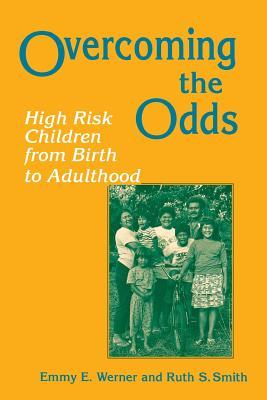Overcoming the Odds looks closely at the lives of an ethnically diverse group of 505 men and women who were born in 1955 on the Hawaiian island of Kauai and who have been monitored from the prenatal period through early adulthood by psychologists, pediatricians, public health professionals, and social workers. Werner and Smith trace the impact of a variety of biological and psycho-social risk factors and stressful events on the development of these individuals, most of whose parents did not graduate from high school and worked as semiskilled or unskilled laborers. Incorporating vivid case study accounts with statistical analysis, the authors focus on both the vulnerability and the resilience of those who overcame great odds to grow into competent and caring adults. They trace the recovery process through which most of the troubled adolescents in the cohort--those with histories of delinquency, teenage pregnancy, and mental health problems--emerged with improved prospects in their twenties and early thirties. Identifying both the self-righting tendencies that enable high risk children later to adapt successfully to work, marriage, and parenthood, and the conditions under which professional and volunteer care is most beneficial, Werner and Smith offer concrete suggestions for effective intervention policies.

Overcoming the Odds looks closely at the lives of an ethnically diverse group of 505 men and women who were born in 1955 on the Hawaiian island of Kauai and who have been monitored from the prenatal period through early adulthood by psychologists, pediatricians, public health professionals, and social workers. Werner and Smith trace the impact of a variety of biological and psycho-social risk factors and stressful events on the development of these individuals, most of whose parents did not graduate from high school and worked as semiskilled or unskilled laborers. Incorporating vivid case study accounts with statistical analysis, the authors focus on both the vulnerability and the resilience of those who overcame great odds to grow into competent and caring adults. They trace the recovery process through which most of the troubled adolescents in the cohort--those with histories of delinquency, teenage pregnancy, and mental health problems--emerged with improved prospects in their twenties and early thirties. Identifying both the self-righting tendencies that enable high risk children later to adapt successfully to work, marriage, and parenthood, and the conditions under which professional and volunteer care is most beneficial, Werner and Smith offer concrete suggestions for effective intervention policies.